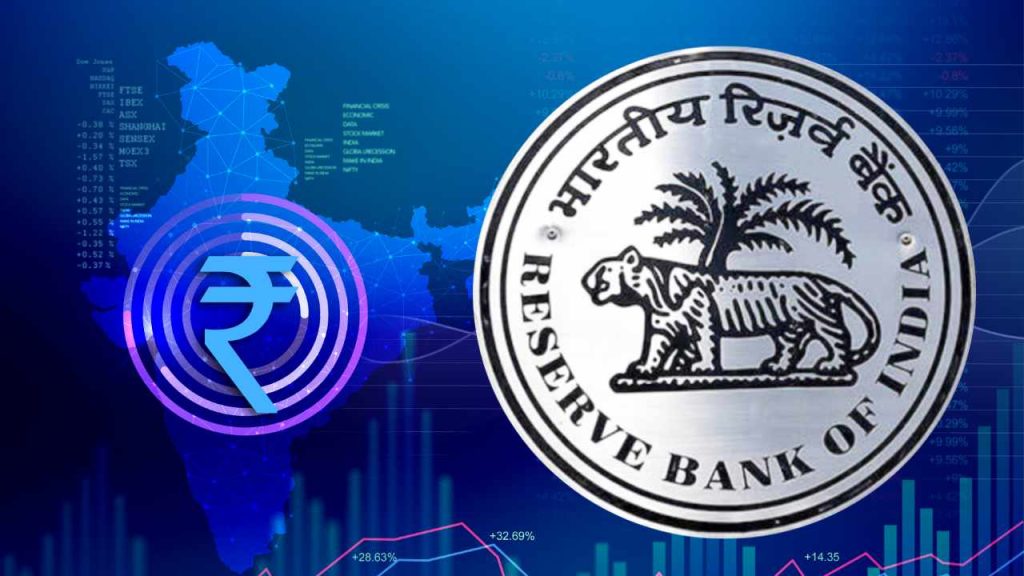Today the Reserve Bank of India (RBI) has launched the pilot of its central bank digital currency (CBDC), which is generally referred to as the Digital Rupee, which actually is a digital tender for the reserve bank of India. It is actually a digital currency but it won’t be a decentralized asset like cryptocurrencies. The digital rupee will be a currency issued by central banks responsible for governing and managing the asset. It could be exchangeable easily with existing currencies and will be considered acceptable for payments and a safe store of value. The formal release for the masses is planned for 1st February and would serve as an additional option and an anti-banknote method to transact money.
RBI starts the first CBDC Op, into a totally tangential area: e-Rupi for transactions between banks for trading in g-secs on the RBI platform.
This essential is non-retail, and the only customers of RBI will be the banks only. pic.twitter.com/SfKf5Ezis3
— Deepak Shenoy (@deepakshenoy) November 1, 2022
RBI has repeatedly dismissed the idea of adopting cryptocurrencies and has launched the digital rupee as an accepted version of Digital Currencies. Manoj Dalmia, Founder, and Director, of Proassetz Exchange, said;
“The digital rupee will be different from Bitcoin, Ethereum, and other cryptocurrencies in the sense it will be backed by the government. Secondly, having an intrinsic value on account of government backing, the digital rupee will be equivalent to holding a physical rupee equivalent,”
Which Banks Are Offering the Digital Rupee Right Now?
Nine banks have been identified for participation in the pilot launch of CBDC. These are State Bank of India (SBIN), Bank of Baroda (BANKBARODA), Union Bank of India (UNION BANK), HDFC Bank (HDFCBANK), ICICI Bank (ICICIBANK), Kotak Mahindra Bank (KOTAKBANK), Yes Bank (YESBANK), IDFC First Bank (IDFCFIRSTB) and HSBC (HSBA).
What are the two types of Digital Rupee(CBDC)?
1) Retail (CBDC-R): Retail CBDC would be accessible and useable for everyone.
2) Wholesale (CBDC-W) is built to use financial institutions.
The retail CBDC is a direct liability of the Central bank, like physical cash, which will be available to the private sector, non-financial consumers, and businesses. The wholesale CBDC will mainly be used for wholesale transactions like interbank transfers. Both types of CBDCs have potential benefits. Therefore, it will be apt to launch a combination of the two.
Will Digital Rupee Prove to be beneficial for India?
Prior to the formal launch of CBDC, no one can really predict the actual use cases or the potential that the program holds, but there are some definite pros of the system, with reduced transaction cost being the most obvious one. Archit Gupta, founder, and CEO of ClearTax says;
.“It will become impossible to avoid the gaze of the government, thus subjecting every transaction to relevant laws within the country. Hence, the government will have better control over how money leaves and enters the country, which would allow them to create a space for better budgeting and economic plans for the future, and overall a much safer environment,”
As CBDC is an electronic form of a sovereign currency, the CDBC is being touted as safer than private cryptocurrencies, and here’s how the digital rupee and cryptocurrency will differ from each other. The development of digital public goods and the India Stack has improved the adoption of digital payments and catalyzed entrepreneurship and a thriving startup ecosystem. While central banks worldwide are exploring the potential benefits of Central Bank Digital Currencies (CBDC) in improving cross-border transactions, controlling monetary policy and financial sovereignty, and improving financial inclusion, in India, Finance Minister Nirmala Sitharaman announced the systematic introduction of the digital rupee by the Reserve Bank of India (RBI) at the Union Budget 2022-2023.
The global CBDC landscape has just started to grow despite countries accounting for 90 percent of global GDP either developing, piloting, or gradually implementing digital currencies in their respective nations. China’s digital RMB was the first digital currency launched by a major economy along with CBDC projects by the Central Bank of Nigeria (e-Naira), the Bank of Bahamas (Sand Dollar), the Eastern Caribbean Central Bank (DCash), and the Bank of Jamaica (JamDex)
Is The Digital Rupee(CBDC) Going To Be Interest-Free?
The digital rupee is probably going to be interest-free and will simply be a digital version of the paper currency. The evolving CBDC space poses more questions than answers in terms of currency design and implementation strategies. The introduction of the digital rupee would have repercussions for the structure of payment and financial markets and, subsequently, for individuals and businesses.
RBI expects to address problems associated with existing physical currencies and cross-border transactions by introducing the digital rupee. Cross-border money transfer and converting money into foreign currency is tedious and expensive. With the launch of the digital rupee, the instant cross-border money transfer is set to make bank cash management and operations more seamless.
Just like everywhere in the world, India faces a cash placement and tracking challenge. CBDC can address anonymity and resolve it in a non-intimidatory way and reduce the demand for cash. The government will save operational, printing, distributing, and storing costs, empowering the government’s vision toward a cashless economy.
Read More:





 Binance Partners Up With Twitter to Help With Blockchain and Bot Accounts
Binance Partners Up With Twitter to Help With Blockchain and Bot Accounts